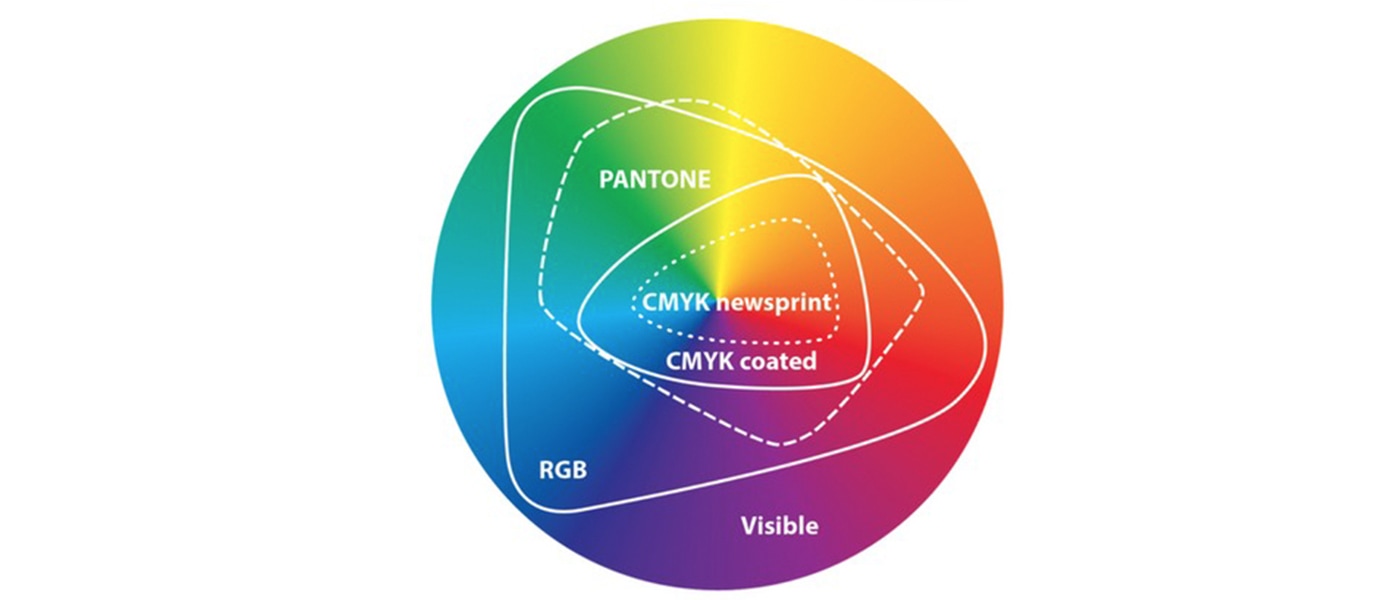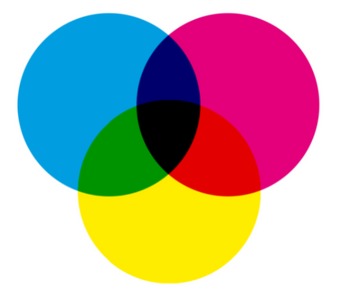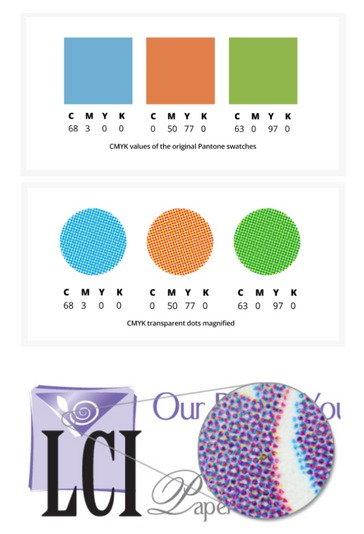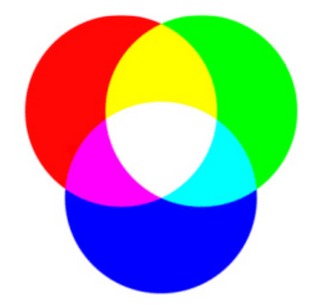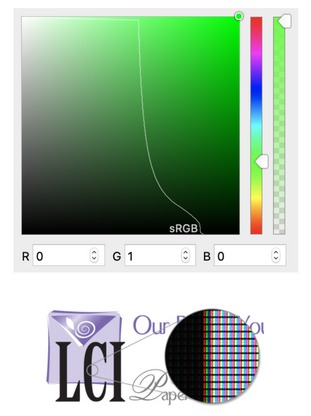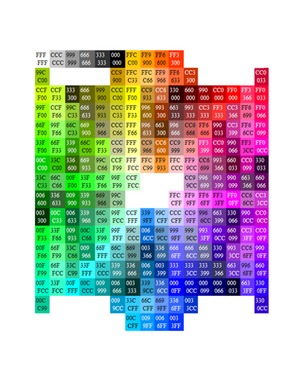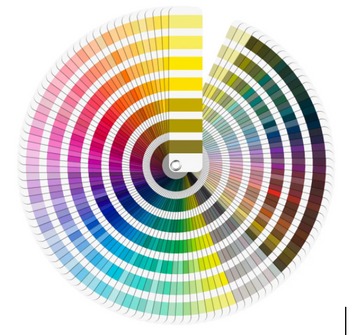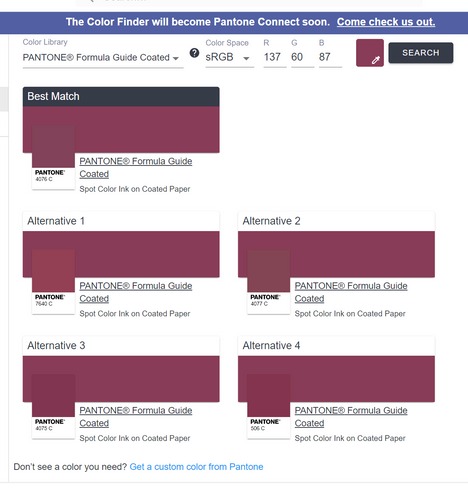We get this question all the time. “Why does my business logo print different colors on different items/at different shops?”
There are so many answers to that question that we are just going to carpet bomb you with information right now. Mostly for clients who are trying to suggest we just make some of this stuff up when y’all give us PNGs programmed with Hex codes and they can’t be printed properly. 😀 So let us pepper you with some info then sum it up at the end.
This is a color gamut. It shows the variety of colors available to each type of color setting. “Visible” means visible to human people with at least three cones of color.
CMYK: (Cyan, Magenta, Yellow, Key (Black))
- 16,000+ Different color combonations
- CMYK Colors are SUBTRACTIVE
- To obtain a lighter color, ink must be removed.
- Red can be subtracted from white to create cyan.
- To achieve black, you add all the colors together at max.
- CMYK is used for printing
- Cannot achieve metallic or neon tones
- CMYK often uses “Half-toning” to achieve colors, which means little dots of magenta printed over a white background is how a lighter pink is achieved.
- CMYK is a “four-color process” where Pantone mixing is a solid color throughout
- CMYK is NOT a consistent color setting. CMYK will be printed differently depending on which printer is printing it. Printers are not calibrated for color authenticity across the board.
- A “True” Black is nearly impossible to produce with ink, and specifically this process.
RGB: (Red, Green, Blue)
- Number of colors available is 166 or 2563 or 224 = 16,777,216
- Of the 16 million colors represented in electronic color, at max only 1,800 – 16,000 can be printed (depending on the print type)
- An ADDITIVE color model
- To obtain a lighter color, color must be added
- All colors set to 255 is white
- When the phone or TV screen is off, they are black.
- Used for DIGITAL and electronic coloring
- Smartphones, computer screens, TVs, illuminated signage
- Can produce vibrant neon colors, 100% black, and most artificially represented colors
- Colors on different monitors or screens will NOT be consistent from screen to screen, or from application to application
- The three cones of color most humans have in their eyes to differentiate color are also broken into Red, Green and Blue, which is why the gamuts are pretty similar.
HEX: (Hexadecimal)
- Number of colors available is 166 or 2563 or 224 = 16,777,216
- Of the 16 million colors represented in electronic color, at max only 1,800 – 16,000 can be printed (depending on the print type)
- Used for DIGITAL and electronic coloring
- Six digit, three-byte hexadecimal number
- Used in HTML, CSS, SVG
- The three bytes represent RGB values
- NOT recommended for printing or branding purposes
PMS: (Pantone Matching System)
- 1,800+ different colors (coated)
- 13 base pigments (plus black)
- CMYK is used for printing
- Suffix of M (Matte) C (Coated) U (Uncoated)
- Created specifically to bring consistency to physical colors
- Need special mixes to produce pastel and metallic colors so MAKE SURE your screen printer has these mixes on hand for these types of orders.
- Same for truly “florescent” colors.
So to sum up most of the color questions we get:
Q: I have my RGB/Hex values for my brand color for my business. Every time I get it printed the colors look wildly different. What the heck?
A: Your logo is colored with a digital coloring system that has 16 million colors in it. Each print shop you are going to is having their designers or their different printers make a very subjective decision as to which of their 16k or 1600 colors they can print from they are going to replace your colors with. For example, our friend was having this problem so we popped his RGB values into the Pantone Converter site (found here: www.pantone.com/color-finder ) and this is what we found.
So his RGB color literally doesn’t translate into a Pantone code, which will make it very difficult to match it across different printers and things.
Q: The colors look different than what I saw on the computer screen! AND they look different on my phone from your computer. Why?
A: Because colors on any electronic screen are going to be RGB, illuminated by light, and there are 16 million RGB colors. There are only 1600-16k colors that can be printed.
Q: If your DTG printer is CMYK, then why are your DTG sample colors from your manufacturer (Brother GTX) in RGB?
A: Great question, one that confused us at first too. It’s because of the following reasons:
1) The GTX printers were built with a color profile that is specifically RGB.
2) Printing with an RGB palette makes it more likely ALL prints we do are as close to the colors intended since we are taking in PNGs, PDFs, JPegs, Vectors and other file formats, all calibrated in any (and sometimes multiple) color palettes. Using RGB colors in the GTX machine color map makes most of them work as close as possible.
3) We are advised as designers to change all of the artwork we are to print to RGB colors for vibrancy.
Q: How do I tell if my print shop is the right one for perfecting colors (as much as possible)?
A: The first question you should ask is, do you have a Pantone book? If they don’t, they probably don’t take color matching that seriously. Ask if they have a “color bridge” deck as well. Then you need to see how old that book is. If it’s more than 2 years old, it’s out of date, and just be careful with their specific color recommendations.
Q: Why is the black on my shirt not really black?
The only way to get a true black on garments is with Vinyl or with Screen Print, both created with PMS colors. Sublimation or DTG printing is printing with CMYK and even if you max that Key/Black out to 100, your black can only be 90% black on CMYK.
Misc Nerdy Definitions
Definitions:
Gamut – The size or breadth of a particular color space
Color Model – The expression of colors within a color space
Color Space – The representation of a specific array of visible colors that maps color values in a given color model.
PMS – Pantone® Matching System
Process Color – Four Color, or CMYK color model used in color printing
Moire Pattern – An interference pattern created by color screens overlaid at an angle, with process printing, they are inevitable, however typically so tight that they are not recognizable to the human eye.
Sources: https://www.ballantine.com/the-differences-between-rgb-cmyk-and-pantone-colors/
https://medium.com/branding101/colors-pantone-vs-cmyk-vs-rgb-5f0bcdc349cf
https://creativemarket.com/blog/whats-the-difference-between-pantone-cmyk-and-rgb-colors
